Chronic acute or painful pain in the hip joint (HJ) often indicates the development of diseases of the musculoskeletal system, the diagnosis and timely treatment of which is important. At the initial stage of the development of the pathology, it will be possible to alleviate joint pain in a conservative way, using special tablets and ointments. At the onset of the disease, the joint becomes immobile and suffers from constant pain syndrome, and surgical intervention is indispensable.
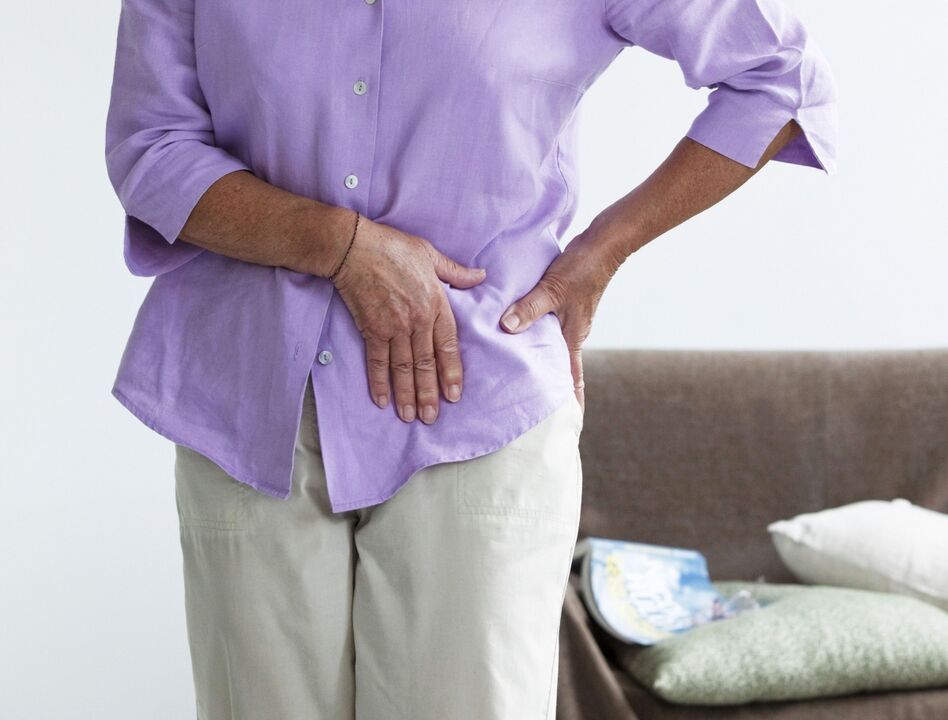
Possible causes and symptoms
Severe pain in the hip joint can be caused by various degenerative-dystrophic pathologies, under the influence of which the joints are destroyed, break down and stop functioning completely. Periodic pain is often caused by diseases of the spine, which causes muscle tension and stretching of nerve fibers. Symptoms of pain in the pelvic bones appear due to injuries, bruises, fractures of the femoral head or neck. To determine the exact cause of hip pain, you need to see a doctor.
Traumatic factors
severe bruising
Acute pain when sitting, walking, or abducting the leg occurs due to bruising caused by a fall on the side or a direct blow to the hip joint. With bruises, the structure of the bone tissue remains intact, but the soft fibers suffer a lot and damage to the ligaments can occur. An extensive hematoma is formed at the site of impact, which hurts when pressed, but if a person is at rest, there is no pain syndrome. When the pain in the hip joint on the left or right side gradually increases, it is worth seeing a doctor to rule out a fracture.
Hip dislocation
Such a violation occurs under the influence of a large force along the axis, with the body fixed in the bent knee joint. A typical situation for this condition is an accident or a fall from a great height. During dislocations, a person suffers from acute pain in the joints, which radiates to the leg and groin areas, which completely disrupts the functioning of the limb. You can alleviate the condition by applying cold to the affected area, further qualified medical assistance is required.
It is important to remember that in case of suspicion of dislocation, it is forbidden to try to set the joint independently.
hip fracture
It is often the cause of hip joint pain in older women. Damage to the integrity often occurs due to falls and strong impact on the hard surface of the trochanter. Femoral neck fracture is considered one of the most dangerous pathologies, because there is a high risk of complications in the form of thrombosis, infection and necrosis. Typical symptoms:
- Severe pain in the left or right hip joint, aggravated by trying to move the limb or move it to the side.
- When sitting or lying down, the victim cannot lift his leg off the floor.
- A healthy, injured leg will appear shortened.
- If the nerve structures are affected, a feeling of numbness appears in one limb.
after surgery
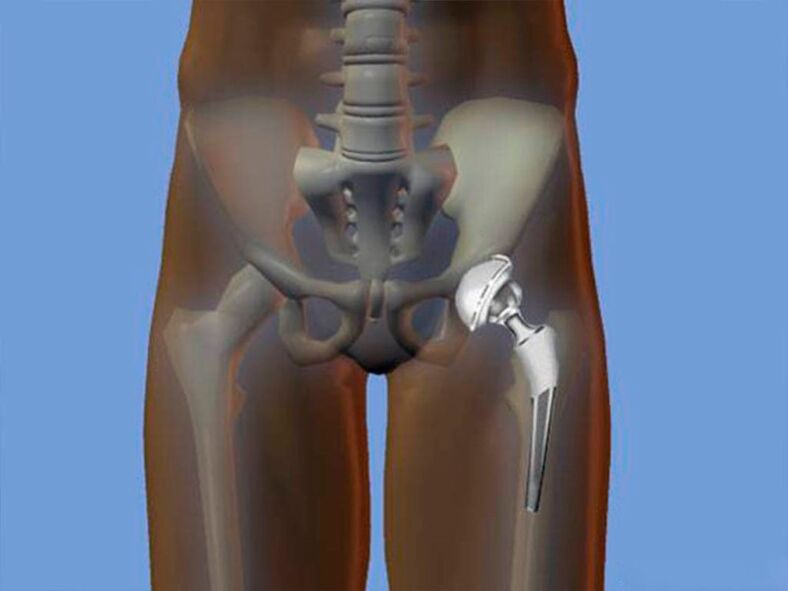
Often, pain in the hip joint, lower back and back occurs after surgery related to the installation of an implant. The need to insert an endoprosthesis arises in cases where the joint is worn out and worn out for some reason, and the problem cannot be cured conservatively. Endoprosthesis is performed to prevent further destruction of the joint. After the operation, until the wound is completely healed, the patient suffers from pain, although their intensity decreases with each new day.
Complications after hip replacement have a negative impact not only on the hip area, but also on general physical, psychological, physical activity and walking ability. To restore the former health, it is necessary to carry out a number of rehabilitation measures, which are prescribed depending on the developed pathologies and problems. For a quick and effective recovery, it is necessary to determine the causes of complications and limitations after hip arthroplasty.
Diseases
Infectious inflammation
A dangerous complication that causes pain in the hip joint. There are such types of purulent inflammation:
- Primary. The main reason is the penetration of pathogenic microflora directly into the joint cavity.
- secondary. The infection penetrates into the joint structures with blood from other inflammatory foci.
Symptoms of inflammatory complications are:
- muscle pain;
- swelling formation;
- skin redness;
- heat
- limb dysfunction.
Inflammatory bursitis
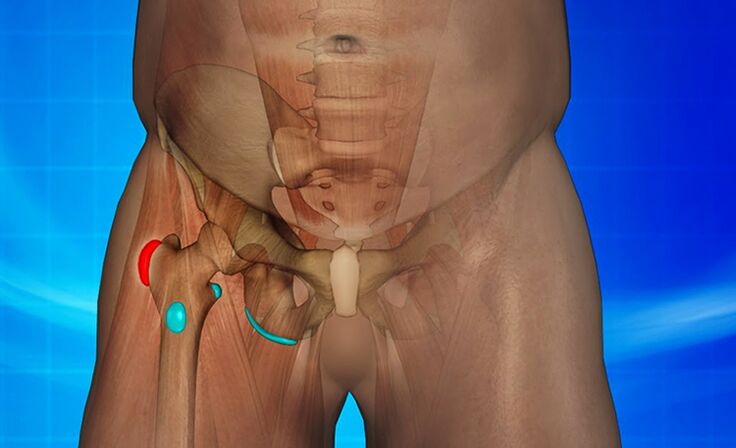
Often, frequent joint injuries cause an inflammatory process in its bags.
This disease is often diagnosed in athletes, whose knees and hip joints are prone to frequent injuries and bruises.
Under the influence of a traumatic factor, inflammation develops in joint bags. Gradually, pathological exudate accumulates in the bursa, an inflammatory complication joins. When walking, the pain in the armpit and the lower part begins to bother, which raises the knee. There is a feeling of stiffness in movements, in advanced cases, the limb hurts at rest, the temperature rises and swelling appears.
Tumors of different etiologies
Pain in the hip joint on the right or left can cause neoplasms:
- benign. As they increase in size, they suffocate nerve structures, causing discomfort and periodic unpleasant symptoms in the spine and thighs.
- malignant. These are dangerous neoplasms that grow rapidly and spread metastases throughout the body. At the initial stage, the patient complains that the joints hurt after running or walking. It increases, the tumor compresses the nerve structures, one leg is removed from the person, the sacrum hurts a lot, painful symptoms are felt in the lumbar region. Conventional painkillers cannot relieve pain in the hip joint in this case.
- Sarcoma of the femoral neck. Severe, cancerous bone disease, during the progression of which the patient's pelvic bones are very painful after sitting, walking, standing. The disease is characterized by chronic fractures of the femoral neck, due to which the functioning of the joint is significantly limited. He is also concerned about the signs of intoxication, under the influence of which the general condition of the patient significantly worsens.
other reasons
Due to the destruction of the cartilage in the joint, a person begins to have difficulty in movement.
If a person has a painful leg and hip joint, the following pathologies can cause such symptoms:
- Coxarthrosis. A chronic, degenerative-dystrophic disease characterized by the destruction of inter-articular cartilage and the growth of osteophytes on bone structures. In the initial stages, the symptoms are not expressed, but during the progression, the functional mobility of the joint is disturbed, the patient suffers from unbearable pain, muscle deformation and atrophy are observed. If the treatment is not started on time, the person becomes disabled.
- Osteochondrosis. A degenerative disease in which the lumbar spine is subject to destruction and deformation. Due to the inflammation and stretching of the nerve fibers, the pain radiates to the thigh, the patient's motor activity is significantly reduced, discomfort is felt even in a state of complete rest.
If the hip joint hurts in a child, it is possible to develop such pathologies:
- hip dysplasia and subluxations;
- osteochondropathy;
- Epiphysiolysis.
Diagnostic methods
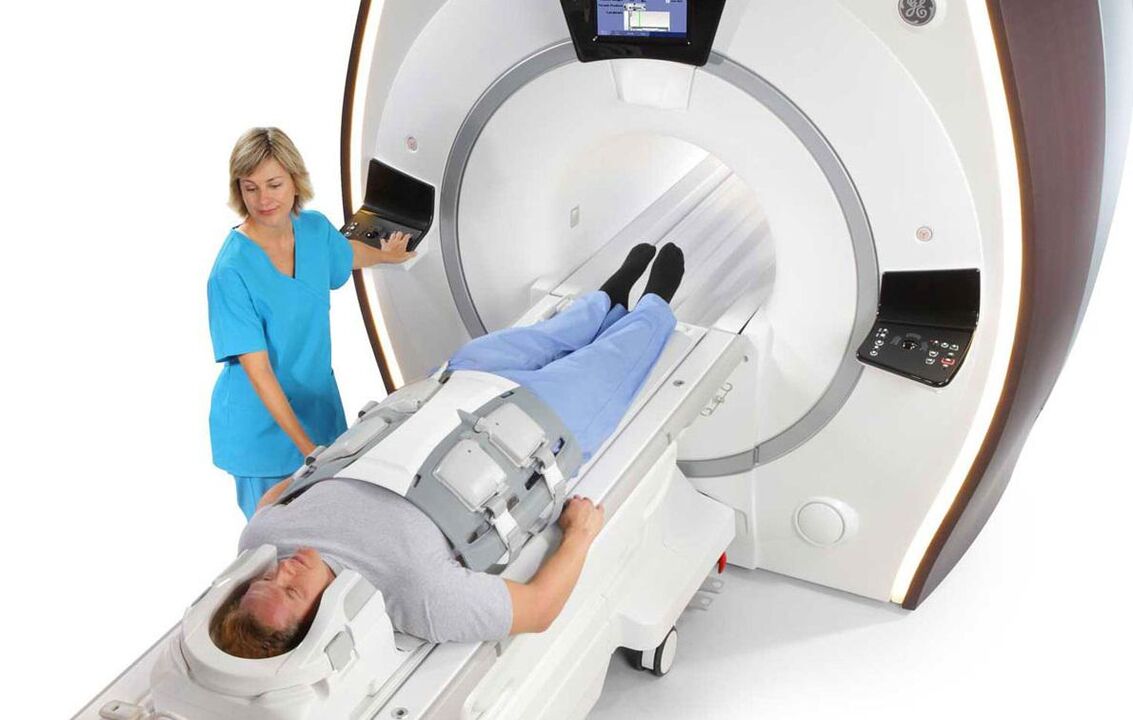
In case of severe, constant pain in the hip joint, you should contact an orthopedist who will help you make an accurate diagnosis and prescribe an adequate treatment regimen.
After conducting an initial examination and collecting an anamnesis, the doctor will give an indication to undergo such diagnostic measures:
- X-ray examination of the spine and hip joint;
- dopplerography and angiography of blood vessels;
- electromyography;
- CT, MRI of the hip;
- Laboratory tests that show the presence or absence of other dangerous pathologies in the body.
What is the treatment?
effective drugs
Depending on the patient's diagnosis, the doctor chooses an adequate drug therapy regimen aimed at eliminating accompanying symptoms and alleviating the patient's general condition. During the period of conservative treatment, it is important to limit the load on the joint, if necessary, observe bed rest and use orthopedic devices. The following groups of funds are used:
- Nonsteroidal anti-inflammatory drugs. Helps to relieve inflammation, swelling, pain.
- Analgesics. Reduction of acute pain.
- Glucocorticosteroids. If non-steroidal anti-inflammatory drugs did not help to get rid of the inflammatory complication, steroid drugs are prescribed, which are injected directly into the joint cavity.
- Muscle relaxants. Relieving muscle spasm.
- Hemostatic. To facilitate the resorption of hematomas.
- Chondroprotectors. Restore cartilage structures, prevent their further destruction.
auxiliary methods
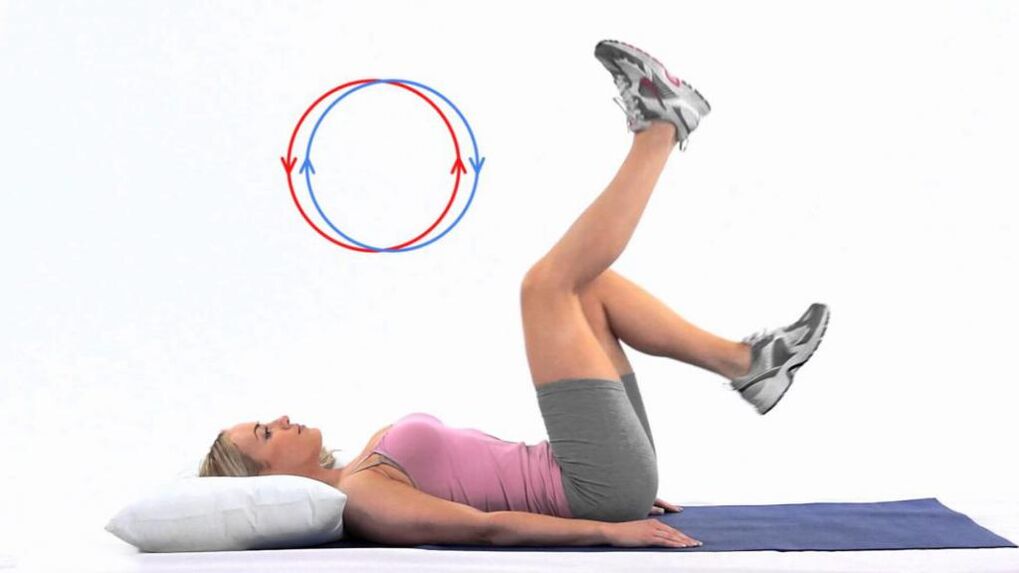
Exercise "Bicycle" will help you avoid problems with articulation.
To speed up recovery and normalize the functioning of the hip joint, it is useful to do therapeutic exercises regularly. The doctor selects the training complex individually for each patient, taking into account the general condition and diagnosis. For prevention, it is recommended to do the following exercises daily:
- bicycle
- scissors
- picking up small objects with fingers;
- Walking barefoot on toes and heels.
At the same time, a course of physiotherapeutic procedures is prescribed, for example, electrophoresis, phonophoresis, laser therapy, massage. When diagnosing malignant tumors or advanced pathologies of a deformed nature, surgical intervention is necessary. During the operation, the surgeon removes the damaged tissue, if necessary, puts an implant. In order to prevent relapse and speed up recovery, rehabilitation is prescribed.














































